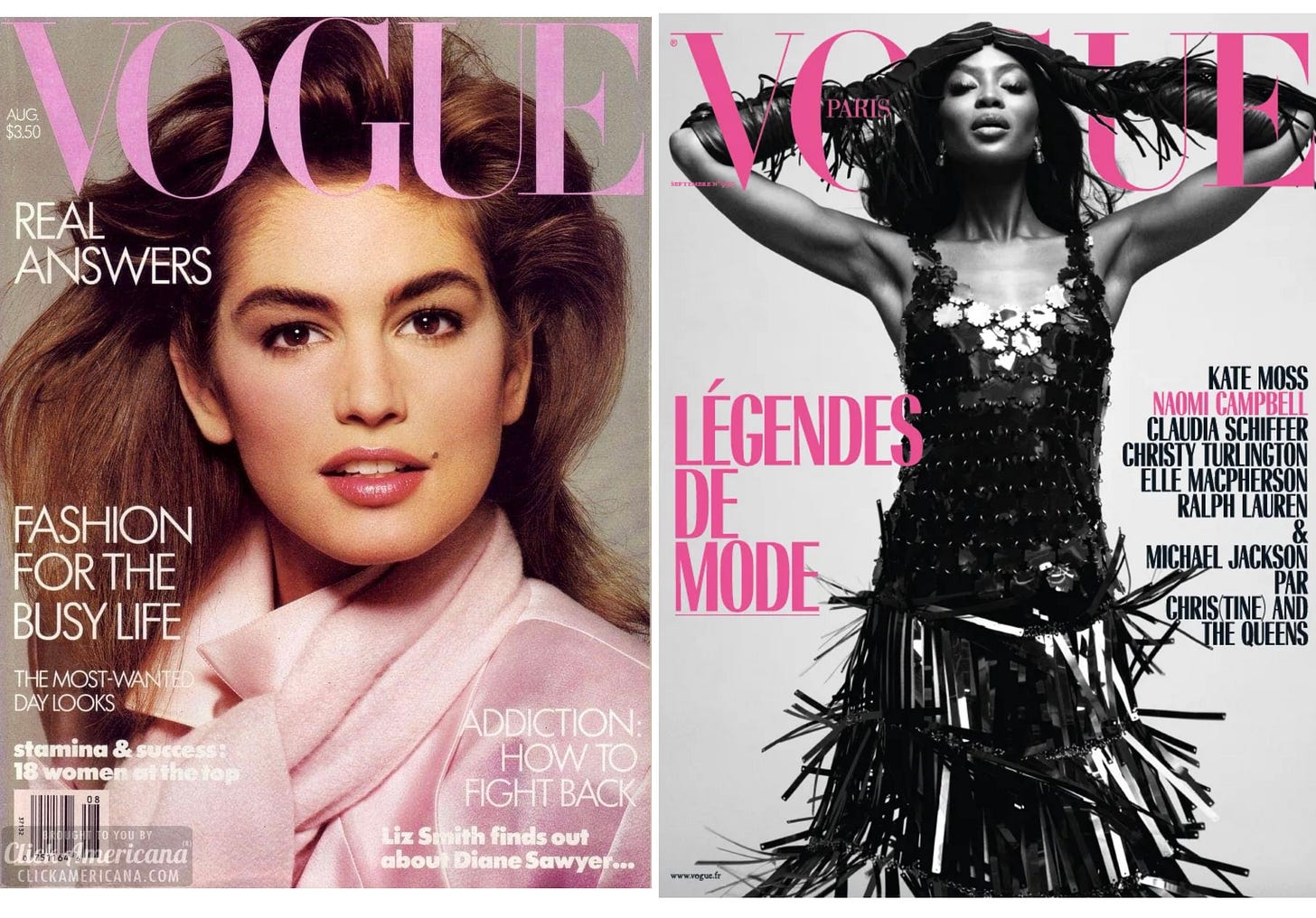Cover Stories: Vogue's Influence on Beauty Standards and Diversity
A dive into the evolution of Vogue covers through the lens of diversity representation
In the fast-paced world of fashion, few magazines have had as much of an impact as Vogue magazine. Beyond its pages of haute couture and avant-garde editorials, Vogue's covers are iconic images of the times they represent, capturing the spirit of societal norms, cultural transformations, and the dynamic field of beauty and fashion. However, as iconic as these covers are, Vogue continues to lack representation of women of colour, different body types, and ethnicities while somehow getting away with it. Unfortunately, this presents a common issue in the world of fashion. The question Vogue enthusiasts have to ask themselves is: How does Vogue get away with this? The answer is complex, although one possibility is their long-standing reputation for defining what society values most about ourselves and our beauty, which has overshadowed its diversity mishaps.
From the Gilded Age to Globalization: Vogue Covers Over the Decades
On December 17, 1892, the magazine released its first edition. This cover, evoking the spirit of the Gilded Age, established the tone for a magazine that would define elegance and style. Its early covers portrayed a limited view of beauty, with white, upper-class women dressed in extravagant clothes. The covers supported existing power structures and beauty ideals while marginalizing people who did not fit into this exclusive construct.

Vogue witnessed significant shifts over the 20th century, reflecting the changing cultural scene. The postwar era experienced flashes of diversity on its covers, although infrequent and sometimes tokenistic. While figures such as Donyale Luna, the first African-American model featured on a Vogue cover, portrayed significant achievements, these representations were outliers rather than the norm.
The 80s and 90s saw the rise of supermodels such as Cindy Crawford and Naomi Campbell, who became quintessential symbols of Vogue, dominating magazine covers. While these models showcased some diversity in terms of ethnic backgrounds, they still adhered to conventional beauty standards.

With the rise of the internet and social media, Vogue faces increasing pressure to address its lack of diversity. Calls for representation have become stronger, fueled by digital platforms that give underrepresented people a voice. For instance, the Black in Fashion Council is a popular platform with almost 80,000 followers on Instagram that advocates for accountability. In response, Vogue took steps toward inclusiveness, introducing more diverse cover stars and promoting body positivity and gender diversity. However, these initiatives are only surface-level, failing to address underlying structural concerns in the fashion industry. Vogue's claims to be broadening and redefining the world of high fashion so that it is inclusive and varied are, in many respects, fanciful, serving as a mechanism to extend the magazine's cultural importance while maintaining its class pledges and networks. Vogue's covers continue to depict mostly white, thin, and wealthy individuals. This trend reflects not just the magazine's editorial choices but also larger cultural prejudices and structural imbalances.
Overall, the history of Vogue covers wider cultural ideals regarding beauty and representation. Despite this progress, there are still substantial gaps that highlight the need for ongoing advocacy and activism.




I found this piece captivating, as it perfectly grasps Vogue's impact on beauty standards. As a long-time viewer of Vogue, I resonated with the insights in this piece. The blog post critically examines Vogue magazine's historical and ongoing struggles with diversity and representation, shedding light on how its iconic covers often reflect narrow beauty ideals. I learned about Vogue's journey from showcasing a limited view of beauty in its early days to introducing more diversity in response to digital activism and demands for inclusivity. Despite some progress, the post argues that Vogue's efforts remain superficial, which I agree with.